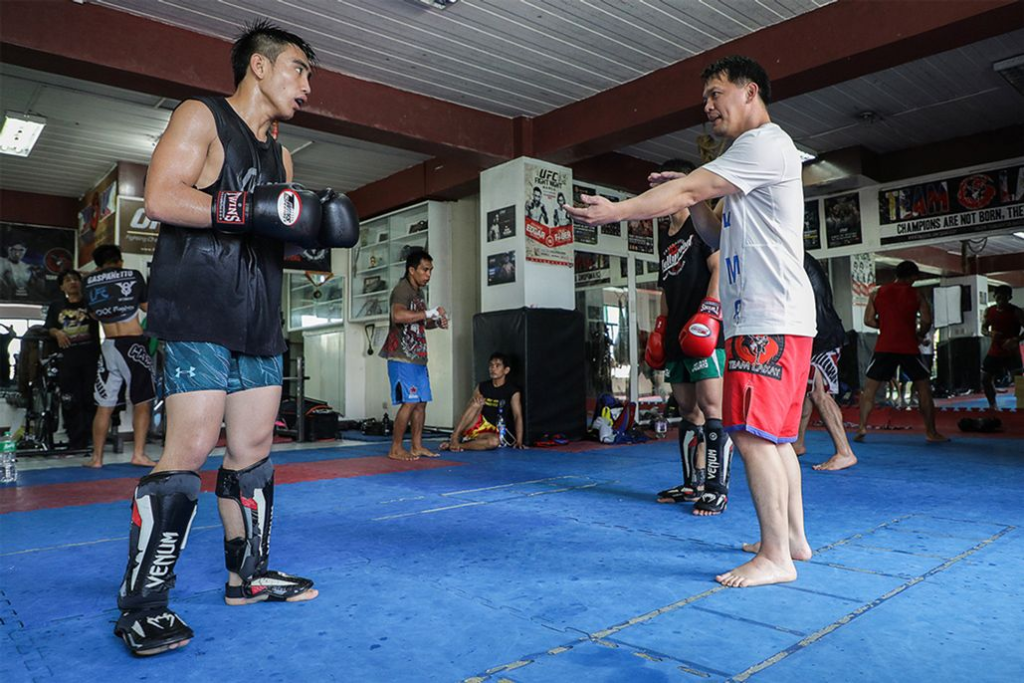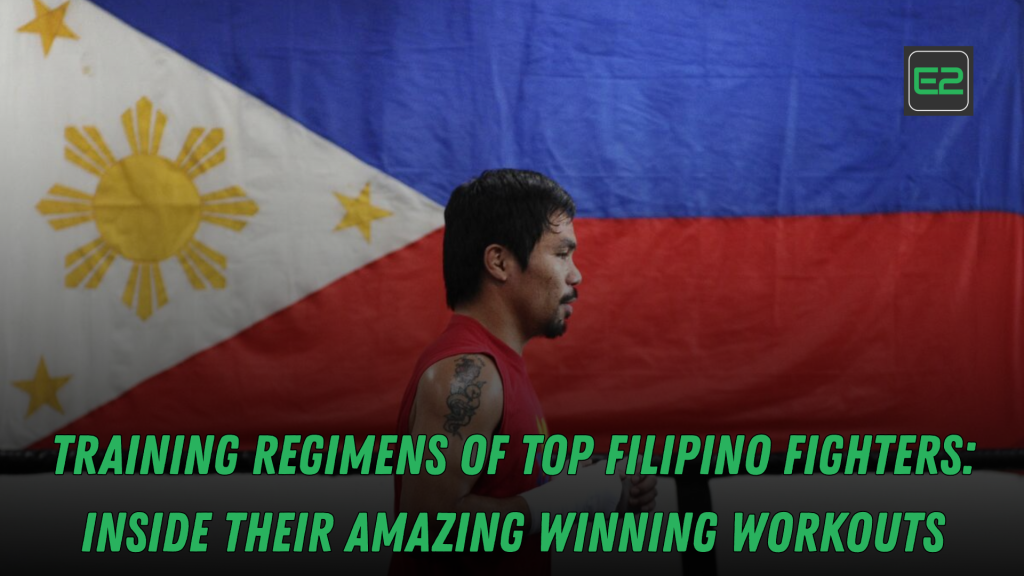Table of Contents
Whether it’s ringside or in the cage, Filipino fighters have honed legendary careers through relentless training disciplines. From legendary boxers like Manny Pacquiao and Donnie Nietes to elite MMA stars like Joshua Pacio and Eduard Folayang, these athletes follow unique, science-backed routines to dominate their sports. In this article, we break down the training regimens of top Filipino fighters, exploring their workouts, recovery, and mental preparation.
1. Legacy of Grit: Manny Pacquiao’s Legendary Workouts
- Early morning runs: Pacquiao famously begins training at 5:30 a.m. with long-distance runs—over 350 miles before major fights.
- Sparring and drills: At Freddie Roach’s Wild Card Gym: hundreds of rounds of sparring, mitt work, and jab-counter drills each camp.
- Strength and conditioning: Gym circuits, bodyweight exercises, core work, and stretching—with acupuncture and electro-stimulation for recovery.
- Nutrition togetherness: While Pacquiao eats simple Filipino-style meals, Pacquiao prioritizes whole foods—beef stews, rice, grilled veggies—relying on consistency over restraint.

2. Methodical Precision: Donnie “Ahas” Nietes’s Training Philosophy
- Technical mitt and bag work: Known for speed and defense—Nietes emphasizes precision over power, working the kombi of mitts and heavy bag.
- Round-based pacing: Mimicking fight duration, he stresses stamina: 10–12 rounds of sparring with controlled intensity.
- Conditioning focus: Footwork drills, agility ladders, shadow boxing—reinforcing the “snake-like” movement his nickname reflects.
- Recovery and defense drills: Light sparring rounds focused on defense, counter-punch timing, and conserving energy.

3. Filipino MMA Elite: Joshua Pacio’s ONE Strawweight Regimen
- Morning tempo runs: A mix of light runs and sprints to build cardiovascular base for 3–5 minute MMA rounds.
- Wushu-inspired striking: Pacio’s Wushu roots shine through—swift kicks, spinning strikes, and combination flow.
- Ground control: Submission drills and scrambles using Brazilian jiu-jitsu (purple belt), key to his high-level transitions .
- Sparring integration: Stand-up sparring with striking partners, clinch and takedown rounds with wrestling/BJJ partners.
- Mental reinforcement: Meditation, fight visualization, disciplined diet—hallmarks of a complete champion.

4. The Educator-Fighter: Eduard Folayang’s Team Lakay Regimen
- Wushu Sanshou foundation: Striking and takedown drills from wushu form the core of every session.
- Functional conditioning: Plyometrics, core workouts, bilateral strength—drills that boost fight athleticism and injury resilience.
- Sparring diversity: Cross-training with boxing, Muay Thai, and BJJ—mimicking real fight scenarios.
- Mental toughness training: Overcoming adversity through rigorous Baguio winters, push-ups, endurance drills, and camp resilience.

5. Philippine MMA Gyms: Groundbreaking Structures
- Team Lakay Wushu (Baguio) has produced multiple ONE Champions like Pacio, Folayang, Kingad.
- A fighter’s day: Two to three training sessions: morning roadwork; mid-day skill drills; evening rounds or functional strength.
- Legacy Gym Boracay offers hybrid boxing-Muay Thai sessions led by international champions.
Shared Principles Across Elite Regimens
Regardless of sport, top Filipino fighters follow these pillars:
- Early starts & high volume – Typically 5:30 a.m. training starts with endurance runs.
- Technical specialization – Pacquiao’s jab, Nietes’s defense, Pacio’s Wushu, and Folayang’s sanshou.
- Conditioning & recovery – HIIT sessions, bodyweight, stretching, physiotherapy.
- Sparring dominance – Variety from mitt work to full-contact rounds in specific styles.
- Mental resilience – Visualization, spiritual practice, and sleepless drills forge championship mentality.
Bringing It All Together: How You Can Train Like A Pro
- Start with morning cardio – Runs, stairs, shadowboxing to build stamina.
- Focus on fundamentals – Work the jab, defensiveness, stance, and footwork.
- Mix skill and strength sessions – Alternate boxing/MMA drills and bodyweight circuits.
- Integrate sparring early – Controlled sparring with protective gear helps condition the mind-body link.
- Prioritize recovery – Use mobility exercises, massage, acupuncture when possible.
- Mindset matters – Visualize success and embrace discipline.
The training regimens of top Filipino fighters—whether in boxing or MMA—reflect decades of technical mastery, fierce conditioning, and mental grit. Names like Pacquiao, Nietes, Pacio, and Folayang highlight how varied backgrounds—boxing, wushu, sanshou—can all thrive when paired with disciplined routines and intelligent coaching.
Share us your thoughts!
Which fighter’s training style caught your attention?
Share your personal workout routine and how you can incorporate their methods!
Subscribe for more insider breakdowns, workout tips for beginners and athletes, and fighter stories.
Dreaming of stepping into the ring? Start with consistency—and let the routines of legends guide your way.
Frequently Asked Questions (FAQ’s)
How many training sessions do top Filipino fighters do daily?
Typically 2–3 sessions per day—starting with morning cardio, then skill drills, and ending with sparring or strength work.
Do Filipino fighters focus more on strength or skill?
They balance both—skill work (striking, grappling, defense) dominates 60–70%, while conditioning and strength fill the rest.
What makes Team Lakay’s training unique?
They blend wushu sanshou striking, sudden takedowns, and tough mountain conditioning for competitive dominance.
How do boxers like Nietes maintain stamina into later rounds?
They use high-intensity mitt/bag circuits, controlled sparring, and long roadwork to simulate round-based fatigue.
Can I train like Pacquiao or Folayang at home?
Yes—start small: daily runs, shadowboxing, bodyweight routines, and basic drills. Gradual progression builds the foundation for pro-level training.
